Feb. 17 to Feb. 23
Despite spending most of his life promoting Taiwanese culture and writing the first general history of the nation, Lien Heng (連橫) left his homeland for good in 1933 on a bitter note.
“Taiwan is no longer livable,” he wrote to his son Lien Chen-tung (連震東), who was already working in China. “I don’t want you to be Taiwanese, and do not keep contact with anyone there.”
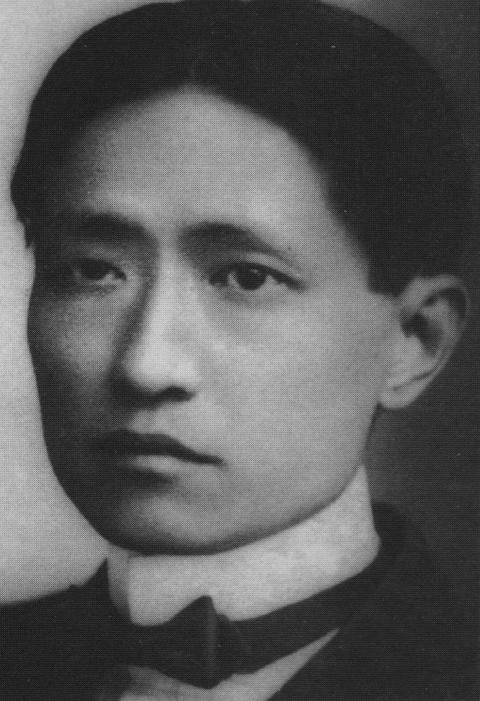
Photo courtesy of Wikimedia Commons
Like most Taiwanese back then, he saw China as the motherland and did not want his son to be a “slave” to Taiwan’s increasingly oppressive Japanese colonizers. But the tipping point came when he lost all his friends and became a vilified figure at home.
Three years earlier, when Taiwan’s intellectuals were in the midst of an anti-opium campaign, Lien penned an article in the Taiwan Daily News (台灣日日新報) supporting the Japanese colonial government’s manufacturing and sale of opium, even stating that the drug was beneficial to one’s health. He was immediately ostracized.
Lien Heng moved to Shanghai and died there three years later. Lien Chen-tung worked closely with the Chinese Nationalist Party (KMT) and held many important positions after it took over Taiwan in 1945, including minister of the interior from 1960 to 1966. Lien Chen-tung’s son, Lien Chan (連戰), was also a prominent KMT member, serving as vice-president from 1996 to 2000.
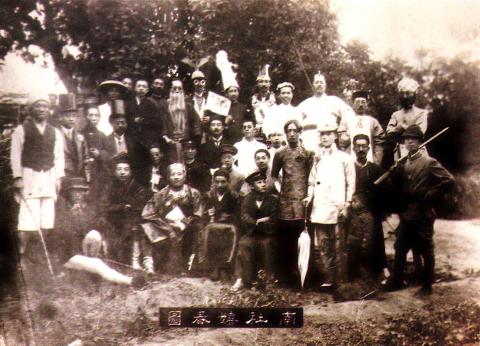
Photo courtesy of Taipei Department of Cultural Affairs
Although it has been criticized for its biases, factual errors and questionable references, Lien Heng’s General History of Taiwan is considered the first comprehensive publication on the nation’s past. It continues to generate controversy, as the removal of its preface from high school textbooks caused quite a commotion in 2017.
NOTION OF TAIWANESE-NESS
Born on Feb. 17, 1878 to a prosperous family in today’s Tainan, Lien was already 17 years old when the Japanese took over Taiwan from the Qing Empire. He received a traditional Chinese education, but Wu Shu-hui (吳淑惠) writes in Lien Heng, Taiwan’s Search for Identity and Tradition that he was troubled by the “pro-dynastic attitude and air of Manchu superiority” in material related to his homeland.
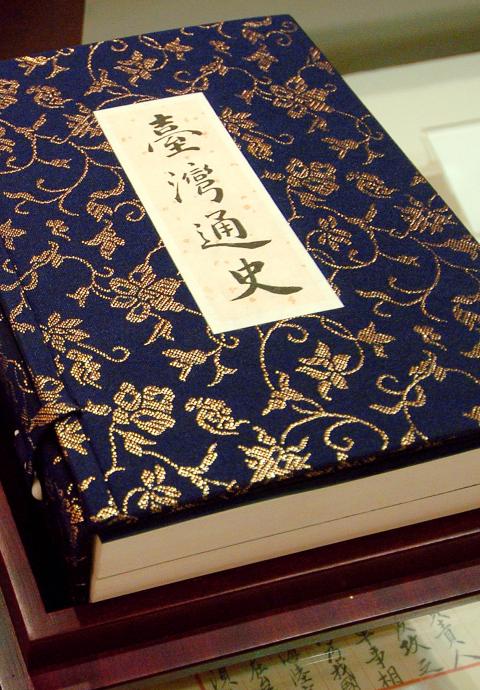
Photo: Chien Jung-feng, Taipei Times
After a brief stint in China, Lien decided to “find a new direction for himself and his family to develop on Taiwan... and live under Japanese colonial rule.”
He studied Japanese and found work in 1899 as editor-in-chief with the Tainan New Daily. However, the colonizers were not kind, razing his ancestral home without compensation to build a military camp. During this time, he interacted with many intellectuals and repeatedly visited China, where he was exposed to Western and modern ideas such as women’s rights and nationalism (his book had a section on Taiwan’s prominent women).
Although he shared other intellectuals’ apprehension for Japanese rule, Wu writes that he was reluctant to join the anti-colonial movement, preferring to “defend the Chinese cultural heritage on Taiwan through his writing.”
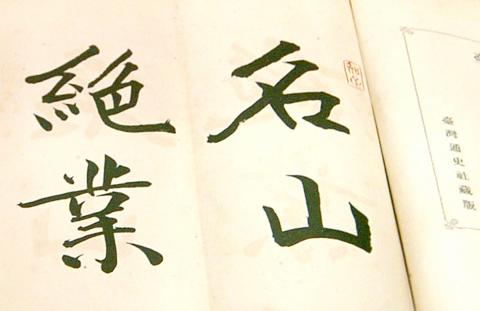
Photo: Chien Jung-feng, Taipei Times
Lien was an avid collector of material on Taiwan’s past. Enamored by the Puli area in today’s Nantou County on a visit with a friend, Lien not only wrote poems celebrating its beauty but produced in 1908 his first historical work, the Puli Gazetteer, using primary sources. That same year, he drafted an outline of what would be his most famous work, The General History of Taiwan. However, he wouldn’t start seriously working on it until 1915.
“Through writing the history of the Taiwanese people, Lien Heng intended to provide the Taiwanese with a purpose and will to continue under foreign rule,” Wu writes.
Upon the fall of the Qing Empire, Lien headed to China once more, hoping to collect official Qing documents on Taiwan’s history for his book. Although he lamented that Taiwan could not be part of the new Republic of China, he found that Chinese scholars had little interest or knowledge of Taiwan and returned home dejected in 1914.
“From the time he arrived home until his death in 1936, Lien was single-minded in his dedication to articulating a distinct Taiwanese culture,” Wu writes. “Drawing on their Chinese heritage, the Taiwanese had innovated, modified and adapted it to their particular needs and character, producing a distinct culture. It was Lien’s goal to bring this to light, to restore a sense of self-respect and dignity that had waned under Japanese occupation.”
BOOK OF CONTROVERSY
The book was purposely Han Chinese-centric.
“[A] history of the Chinese immigrants of Taiwan rather than the history of the island of Taiwan itself,” Wu writes. “It reflects Lien’s political pursuit rather than his commitment to the discipline of history.”
Lien completed his manuscript in 1918. He was cautious about his work as he wasn’t sure about the attitude of the new governor-general Motojiro Akashi. Fortunately, however, Akashi “emphasized gaining the support and loyalty of the Taiwanese through offering better educational opportunities and the promotion of Taiwanese culture and tradition,” Wu writes, giving Lien the perfect window to publish his book
Lien strategically requested Akashi to provide calligraphy on the cover page, and had his Japanese colleagues write prefaces for him in classical Chinese. To them, this was a scholarly endeavor within the framework of Japanese history with Taiwan as the “southern gate of our country.”
Lien was, however, forced to change a chapter title regarding the Republic of Formosa’s resistance against the Japanese occupiers from “Period of Independence” to “Period of Transition.”
Rather than criticize the Japanese colonizers, the book ends with the defeat of resistance forces by the Japanese in 1895. The KMT would also favor it because of Lien’s anti-Japanese ideals and his book’s positive sentiments toward Chinese culture.
Akashi died in office, and his calligraphy was replaced by new governor-general Kenjiro Den. The book was released in November 1920, and Lien also authored compilations of Taiwan’s poetry, folk songs and the Hoklo language (also known as Taiwanese) because he was worried that they would disappear under the colonial kominka policy to assimilate Taiwanese into Japanese culture.
Despite his dedication to his homeland, Lien would rather his children flourish in China than remain a subjected people at home. It was probably the right move, as his descendants were able to assume powerful positions in the KMT.
In 2017, the preface to the book was removed from the curriculum on the grounds that it completely disregarded Aborigines, calling them savages, and that Taiwan’s history began with the Dutch, and was a barren land before the Chinese arrived. Unsurprisingly, the KMT and other pro-China political parties blasted this move as the Democratic Progressive Party’s attempt to “desinicize” Taiwan’s history, but the motion eventually passed.
Taiwan in Time, a column about Taiwan’s history that is published every Sunday, spotlights important or interesting events around the nation that have anniversaries this week.

Mongolian influencer Anudari Daarya looks effortlessly glamorous and carefree in her social media posts — but the classically trained pianist’s road to acceptance as a transgender artist has been anything but easy. She is one of a growing number of Mongolian LGBTQ youth challenging stereotypes and fighting for acceptance through media representation in the socially conservative country. LGBTQ Mongolians often hide their identities from their employers and colleagues for fear of discrimination, with a survey by the non-profit LGBT Centre Mongolia showing that only 20 percent of people felt comfortable coming out at work. Daarya, 25, said she has faced discrimination since she

Three big changes have transformed the landscape of Taiwan’s local patronage factions: Increasing Democratic Progressive Party (DPP) involvement, rising new factions and the Chinese Nationalist Party’s (KMT) significantly weakened control. GREEN FACTIONS It is said that “south of the Zhuoshui River (濁水溪), there is no blue-green divide,” meaning that from Yunlin County south there is no difference between KMT and DPP politicians. This is not always true, but there is more than a grain of truth to it. Traditionally, DPP factions are viewed as national entities, with their primary function to secure plum positions in the party and government. This is not unusual

April 21 to April 27 Hsieh Er’s (謝娥) political fortunes were rising fast after she got out of jail and joined the Chinese Nationalist Party (KMT) in December 1945. Not only did she hold key positions in various committees, she was elected the only woman on the Taipei City Council and headed to Nanjing in 1946 as the sole Taiwanese female representative to the National Constituent Assembly. With the support of first lady Soong May-ling (宋美齡), she started the Taipei Women’s Association and Taiwan Provincial Women’s Association, where she
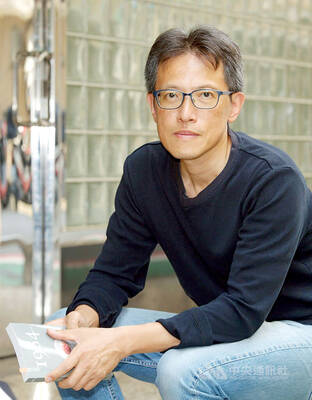
More than 75 years after the publication of Nineteen Eighty-Four, the Orwellian phrase “Big Brother is watching you” has become so familiar to most of the Taiwanese public that even those who haven’t read the novel recognize it. That phrase has now been given a new look by amateur translator Tsiu Ing-sing (周盈成), who recently completed the first full Taiwanese translation of George Orwell’s dystopian classic. Tsiu — who completed the nearly 160,000-word project in his spare time over four years — said his goal was to “prove it possible” that foreign literature could be rendered in Taiwanese. The translation is part of